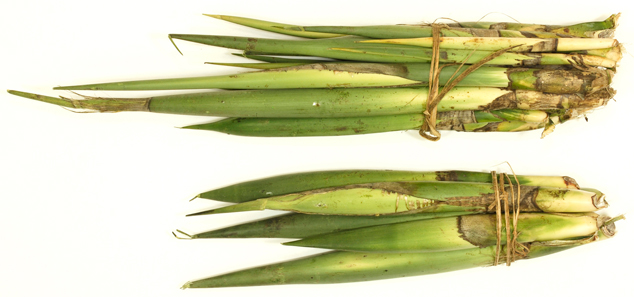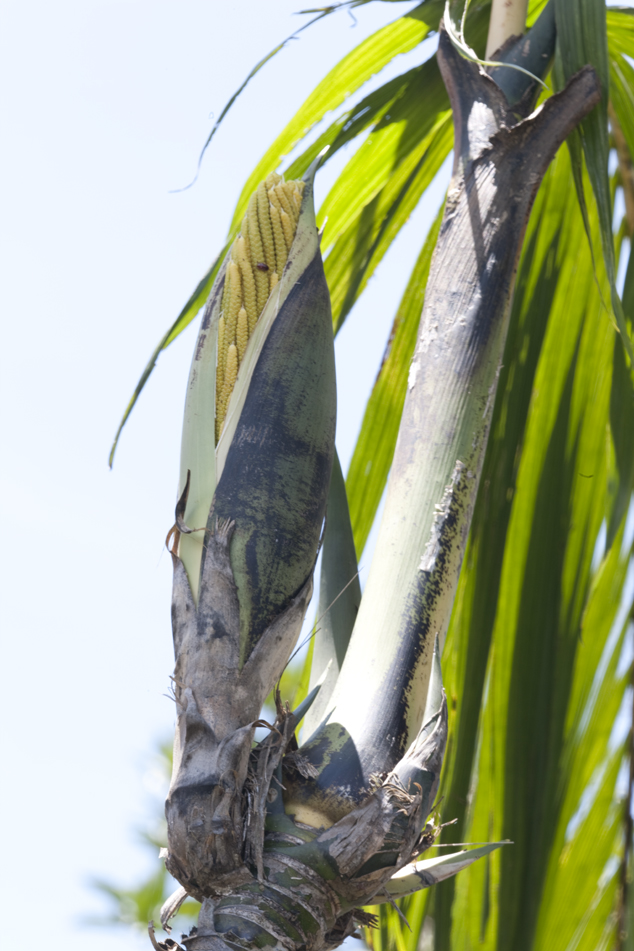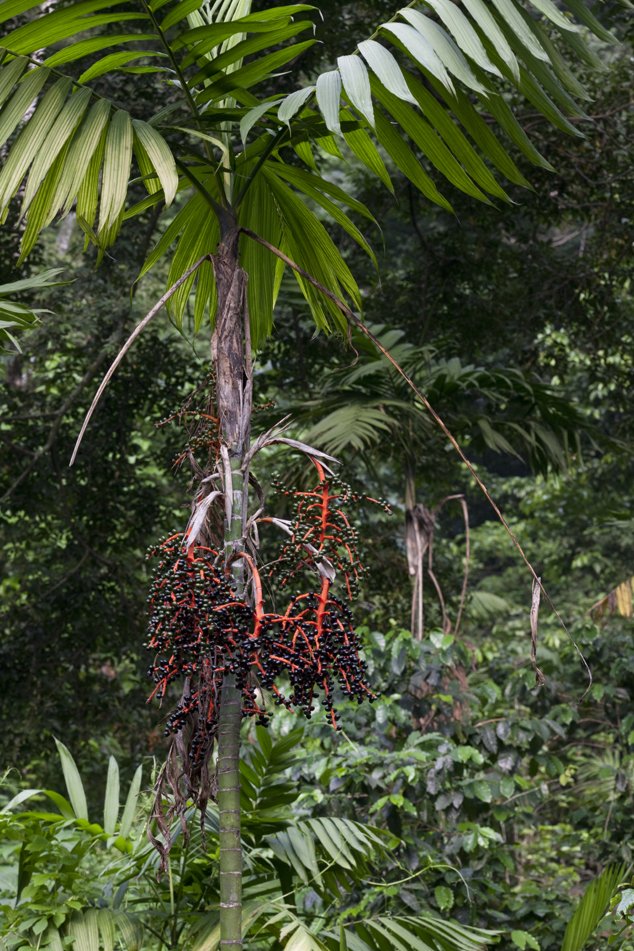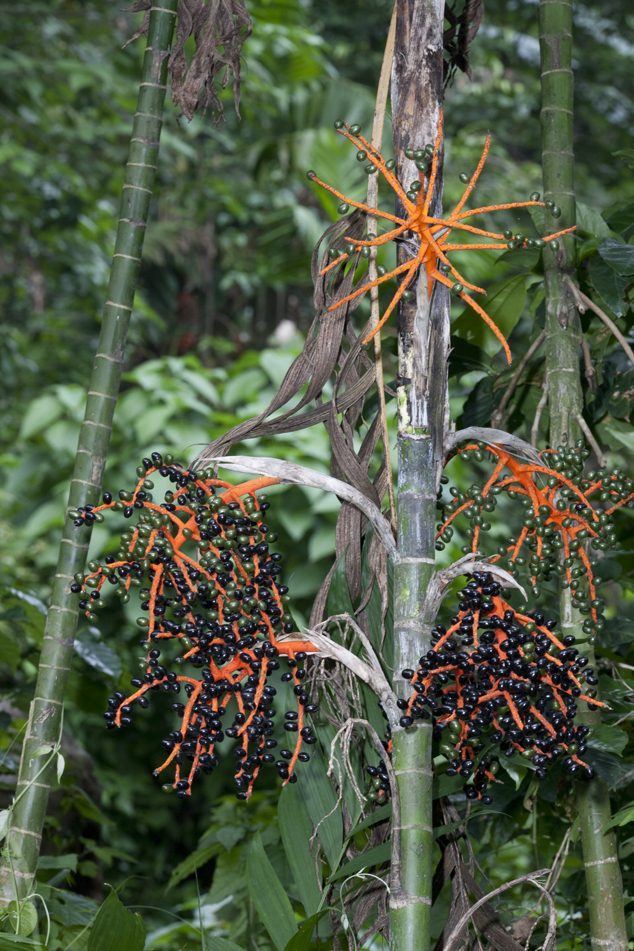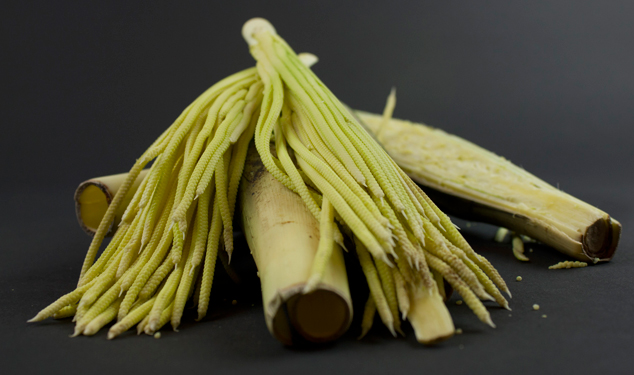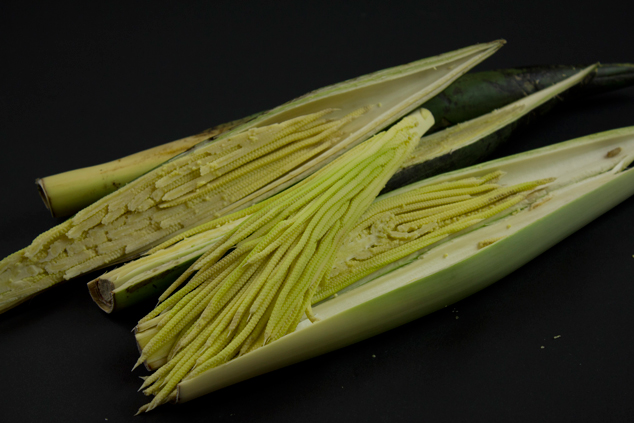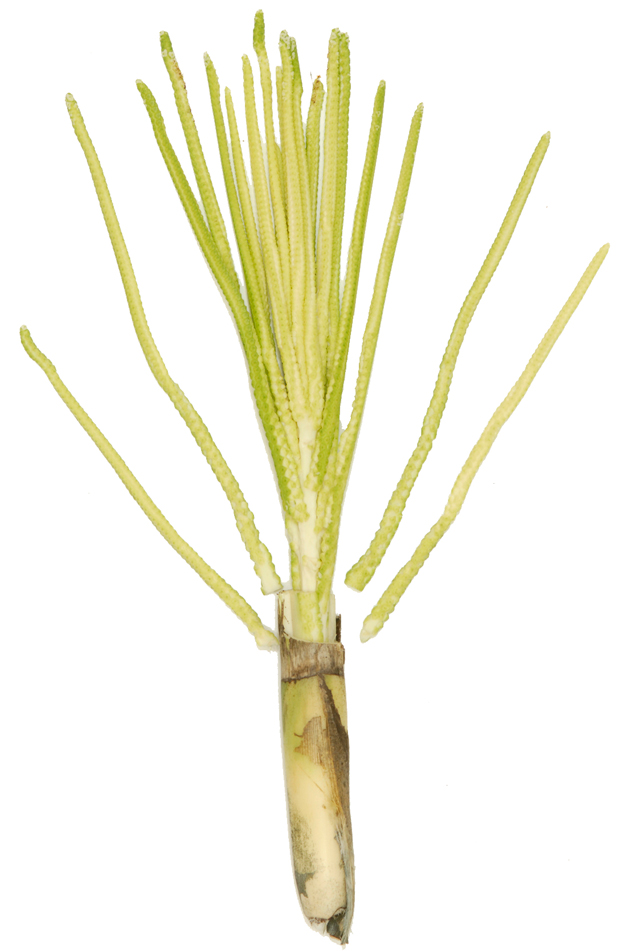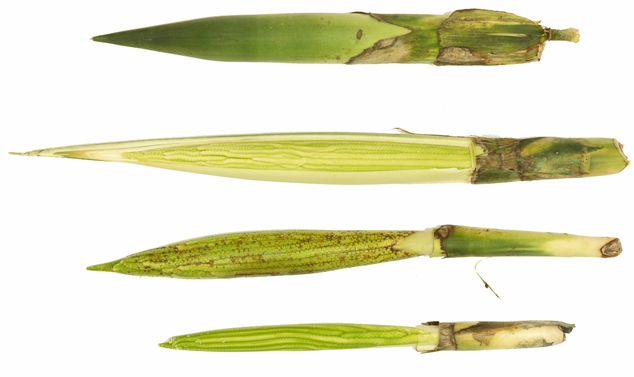Pacaya is a common palm tree in many parts of Guatemala. The flowers are found in village markets. I enjoy eating this, but don’t yet have any growing in my own garden (I am in the middle of the suburbs and don’t have space for everything).
In early June I saw a few pacaya still bearing flowers but most already had fully developed seeds.
Peel away the outside husk and you see a remarkable work of Mother Nature. It is worth buying one that has not yet opened, and pull it open yourself. It’s amazing how each part of the male inflorescence is “geared” and fits all adjacent parts. It is like you would expect an alien creature to be designed: completely intelligent engineering.
It spreads by seeds through the collection of seedlings in the forest. The heads have a characteristic bitter taste and are eaten cooked or roasted on the grill, accompanied by salt and lemon or wrapped in egg with tomato sauce.
Pacaya palm bundles, photo studio FLAAR, FLAAR Archive.
The palm forest pacaya, common plant found from Mexico to Colombia has male inflorescence edible. The Pacaya is a traditional food in Guatemala and neighboring countries, is preserved in small quantities exported to the United States and Canada. It is also a source of edible bone (heart of palm) and the leaves are used for flower arrangements and grows as an ornamental plant.
The berries of pacaya palm are photogenic
The berries are not what you eat, but the berries are definitely photogenic. However the male inflorescence itself is not very photogenic.
Pacaya palm male, notice the berries, FLAAR archive
Pacaya berries inmature, FLAAR archive
Where to find and see pacaya palm
I see this all over Peten and in many other areas of Guatemala. The park of Auto Safari Chapin also has them. But clearly the Highlands are one locus for pacaya, since the volcano named pacaya is in the Highlands.
Last update 9 August 2011.
First posted July 07, 2011.


